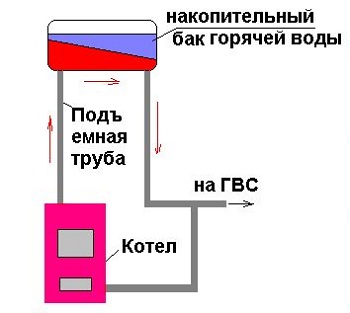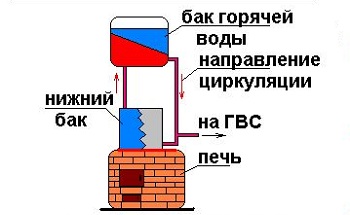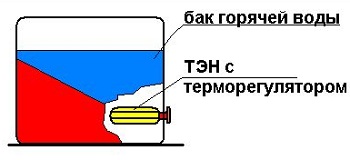Not always possible to provide vacation home or giving uninterrupted drinking water. Causes can be different, but the best solution in such cases will be the water supply system of a private house with a cumulative tank.
By itself, such a tank is the simplest design. But its installation and connection to the system can cause questions and difficulties. So that they do not arise, read this article.
In which cases will help the accumulative tank
A modern man is not enough to make water in the house. It is necessary that it flows from the crane, and with a good pressure for the normal operation of watershed devices. And in some cases, only tank cumulative for water supply, built into the system, can provide such work.
What are these cases:
- When there are no no, and their device is impossible. In such a situation, only water supply is possible with a storage tank, which is periodically filled from tank trucks.
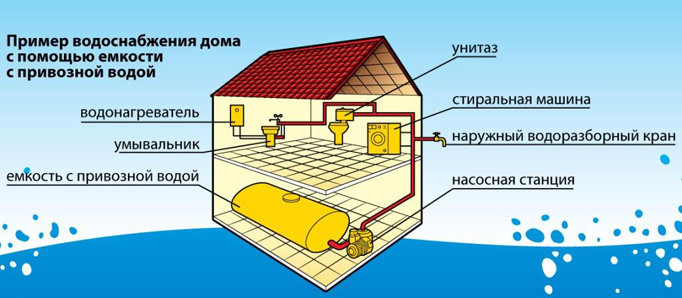
- When the house is centralized water supply from the urban or settlement network, but water is fed with frequent interruptions or on a specific schedule.

- When you have your own well or well, but they have a small flow rate and cannot provide your needs at any time, because the water in them disappears with a long continuous fence.
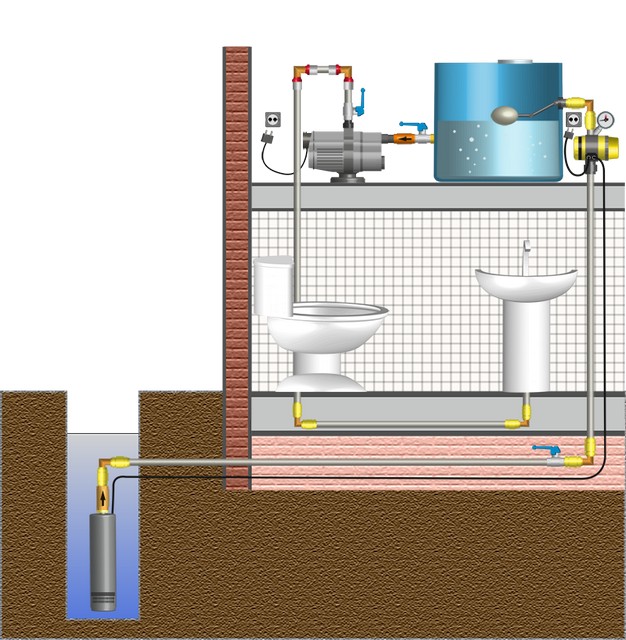
- When electricity is often disconnected, without any pump cannot work.
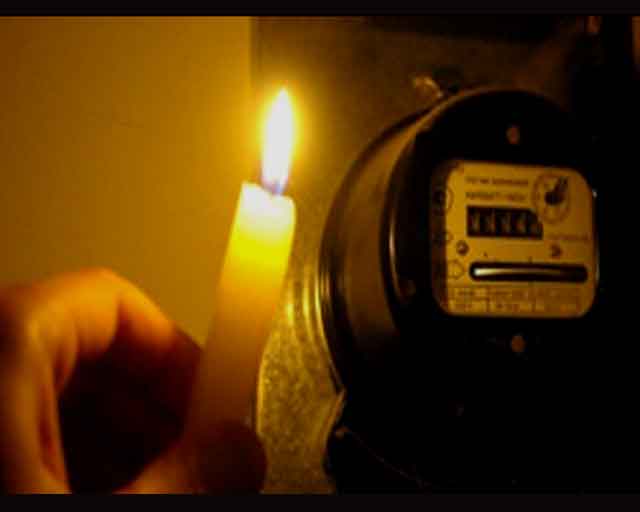
In any of these situations, the supply of water accumulated in the tank will allow you not to experience discomfort from its absence from several hours to several days. It depends on the capacity of the capacity, the number of users and the usual consumption.
Methods for connecting storage tanks
The tank can be connected to the system two different ways: Placing it on a high mark or at the ground level or below.
Upper location
This water supply scheme of the house from the accumulative tank is practiced mainly in cases where there are no devices in the house that need a good pressure, and the need for water at the tenants is minimal - wash, wash the dishes, etc.
As well as with frequent interruptions with electricity. Because the water from the tank, installed on the roof, the attic or the overpass, comes to consumers in gravity, and such a system does not depend on the presence of voltage in the network.
Council. Designing a self-e-water supply system from the tank, keep in mind that the pressure in one atmosphere gives the height difference between the drive and 10 meters crane. And this is excluding losses in the pipeline itself.
Such pressure in the system will be insufficient for the operation of the washing machine, and even take the shower will be problematic. It can be enlarged by connecting it from the container. The advantage of such an installation in its simplicity and ease of tank maintenance.
However, do not forget about the shortcomings:
- The accumulative capacity takes a lot of space, take a useful area at home;
- If you install it in the attic or on the street on a special overpack, it will be possible to use water only in the warm season. Or you need to warm and warm up and the tank itself, and the pipes go to him and from it;
- If the installation was not complied with the instruction or the system itself was worn out over time, leaks capable of delivering a lot of trouble.
As you can see, each homeowner solves these problems in its own way depending on the needs of the family.
- So that the water does not freeze, the tank is installed on the heated second floor or attic, sacrificing the area.
- Or use electrical heating capacitance in the attic. And additionally pay for electricity.
- Or simply climb it on the cabinet, by satisfying the minimum pressure in the system.
Low location
It is more common and effective method Accommodation for houses with constant accommodation and all the conveniences familiar to the urban resident. Such a water supply system with a cumulative tank is necessarily equipped with an additional pump or. Without them, the water itself does not flow to consumers, and with it you can get any necessary pressure.
Lower accommodation options are also several:
- Ground - when the capacity is used only in summer and does not need insulation;
- Underground - the tank bursts into the ground, and only the neck is displayed on the surface, which provides access to it for repair and maintenance;
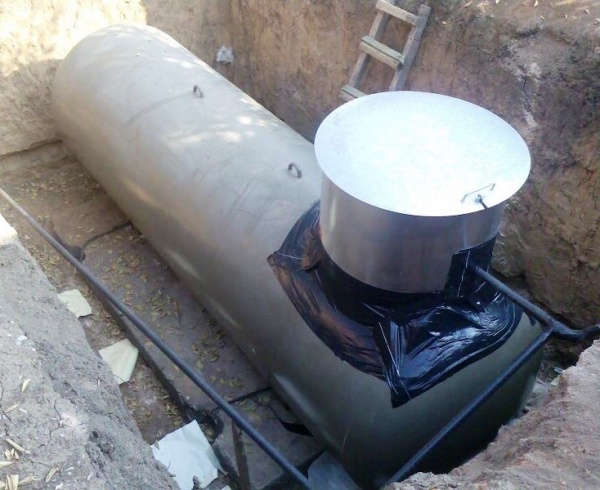
- Basement - When the house has heated basement or technical room.
The last option is the most convenient, as the container does not need to be insulated, there is always access to it and it does not occupy a useful space.
The second most popular is an underground option. It also allows not to use the house area, but in this case, cleaning and repair will be conjugate with certain difficulties. Yes I. toplocated above the level of freezing, also have to be insulated.
In addition, not every container can be buried in the ground. It should be durable, with thick walls, rigids or metal formwork. Otherwise, you need to build a rigid shell for it.
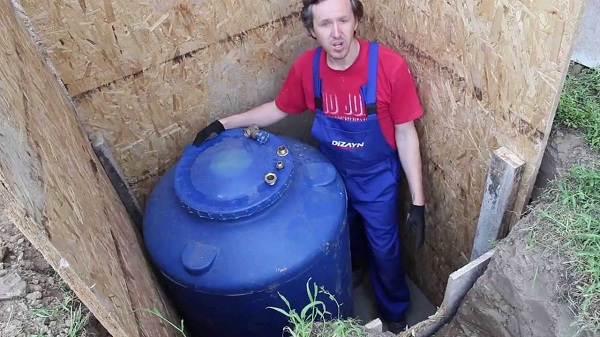
It is important. When underground installation, the bottom of the container should have a bias of 12-15 degrees so that the weighted particles contained in the water are settled in one place and it was easier to remove them through the hatch.
Constructive features
The device of the accumulative tank does not depend on the installation site. There are only some nuances.
The container is supplied with the following structural elements:
- Float valve. It prevents its overflow and includes a pump when the water level is reached the minimum marker.

- Overflower In case of breakdown in the float switch. It is located in the top of the tank and connects to the sewage.
- Drainage nozzle at the bottom. Designed to remove precipitation. They are equipped with accumulative tanks for water supply, located at the top or in the basement of the house. Underground containers are cleaned upper hatch.
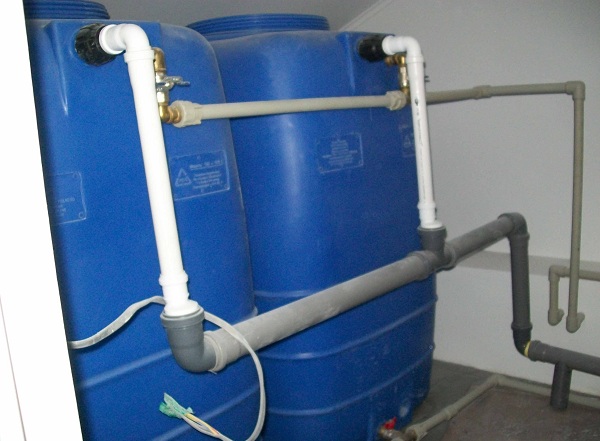
- Filter located at the entrance, delay some of the suspended particles. It can be installed at the output, equipping the smallest grid.
- Ventilation pipe or breathing valve. If you do not install them in the tank cover, during draining the water of its walls can be flattened under the action of atmospheric pressure.

Council. The diffuser on the feed pipe will prevent the water drilling and its mixing with the sediment on the bottom.
Water supply systems schemes with cumulative tank
The water supply scheme of a private house with a cumulative tank depends primarily on its placement and type of source, as well as from the need to increase the pressure in the system and preparation hot water. Yes, and the choice of the pump itself feeding the water in the drive, and the accompanying equipment is also not just done so.
For example:
- If water is taken from the well to 7-8 meters deep, it is enough to buy. On the suction pipe, it is necessary to install a check valve that prevents the water outflow back to the source;
- If from a depth of no more than 15-18 meters, the surface pump must already be provided with a remote ejector;
- If from the deep artesian well, it is possible to get it only with the help of a deep submersible pump. In this case, the check valve is placed on the pipe leading from the pump to the house.
Council. To protect the equipment from breakdown and overheating, you need to install a dry-running relay on it, and in the source itself - the level sensor. This is especially important if the well or well is low-riveted.
Water supply accumulative tanks - connection schemes may be:
As you can see an additional pump on the supply pipe from the drive to the system allows not only to increase the pressure in it regardless of the tank position, but also to install a boiler to prepare hot water.
If you often turn off the electricity, and this pump, and the boiler will be useless. It remains only the supply of cold and hot water According to the last scheme, with the second tank. Its volume is selected according to your needs, but what he is more, the longer it will cool the water.
This can be used to heat the first container in winter time. For example, a storage tank for hot water supply of 1000 liters, installed next to the cold water tank, will not let it freeze during the day even if during this time the water in it will not be heated.
There are several ways to heal water for this scheme:
| Scheme | Description |
|
|
Using a gas or electric heating boiler. |
|
|
Using a stationary wood-burning oven. |
|
|
Using a tubular electric heater - Tan. |
How to choose a drive
When choosing a tank, you need to pay attention to two basic parameters: the volume and material of the manufacture.
Volume
The tank drive should not be confused with the hydroaccumulator. It is notity that the second is a pressure capacitance that regulates the pressure on the network due to the pressure of compressed air into the rubber membrane.
The maximum volume of the hydroaccumulator is only 100 liters, standard - 24-50 liters. This is very little for water supply in the usual mode in the situations described above.

To understand what the container you need, you need to analyze the following factors:
- Required water consumption per unit of time. It is possible to calculate it approximately by creating the nominal flow of all the devices existing in the house - mixers, toilet bowls, washing machine and dishwasher. Another method of calculation offers to multiply the daily need for the water of one person by the number of family members. But this need is all different and also depends on the availability of amenities in the house. It can be 60, and 200 liters per day. Therefore, focus on your habits and conditions.
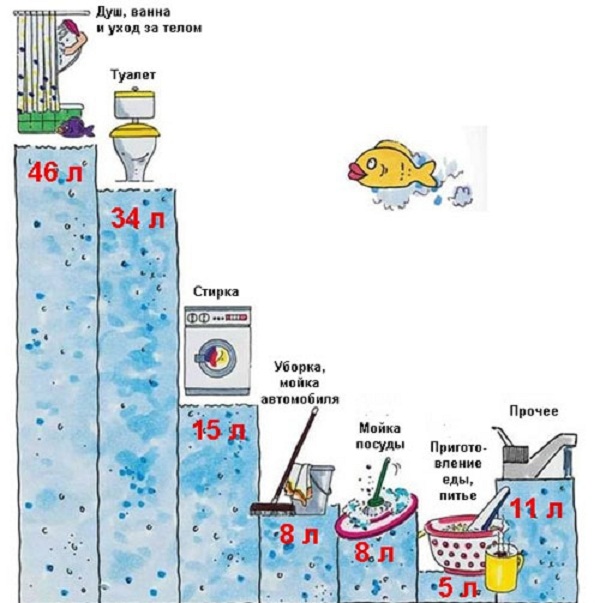
- Performance of the autonomous source or work schedule of the centralized system. For example, if water or electricity is disconnected by a maximum of a couple of hours, you may have a 100-liter barrel, and it is quite another thing if it happens often for a long time. It also makes no sense in the installation of a five-binding capacity, if your well can be supplemented in no more than 500 liters in it.
Material
If you are planning a drinking water supply for giving - a storage tank must be made of materials that do not react with water and do not affect its taste, smell and quality. And this is either stainless steel, or food plastic.
Increasingly, preference is given to the plastic, as it is much cheaper and more durable, especially if we are talking about underground tank. In addition, it is light: even the tank of impressive sizes can be installed with their own hands without attracting a heap of assistants or special equipment.
To approximately navigate in prices, look at the options presented in the gallery:
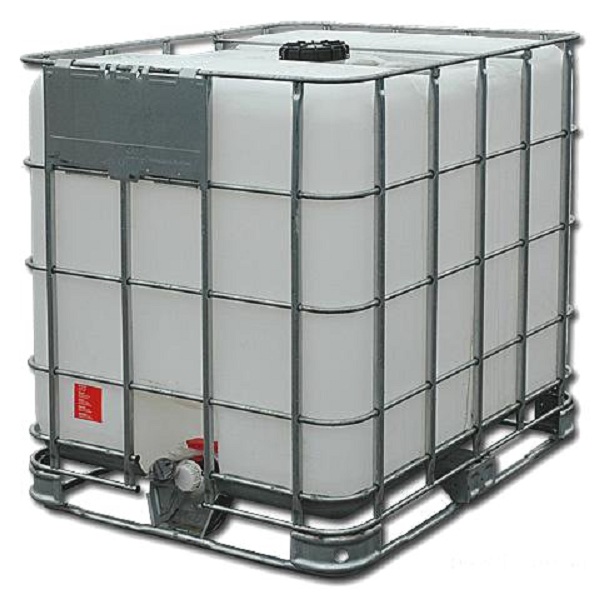
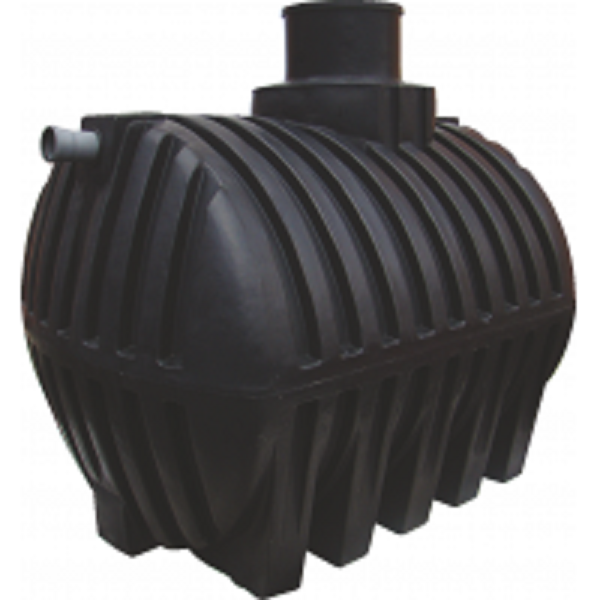
As you can see, stainless steel tanks are more expensive. It is more profitable to buy plastic, but you need to make sure that the material and its purpose is to store drinking water.
Conclusion
Sometimes water supply in a private house with a cumulative tank becomes the only opportunity to live in comfort, to ensure that neither the super-modern pumping station, nor the central water supply line. The complexity of creating such a system depends on the location of the tank, your needs and water supply conditions, so in each case you need to choose your schema.
It will be the easiest for a seasonal country house, but for a country cottage with permanent accommodation and all amenities will have to spend and try. But the result is worth it.
Looking at the video in this article, you will make sure that "no gods are burning", and much, if not all, you can do yourself.
The main stage of arrangement country house or private bath Is the installation of a modern autonomous water supply system.
To implement it, a reliable cumulative water tank is used.
No less important is the issue of proper placement of the device, so that the finished water supply system has functioned properly throughout the entire life.
The storage tank for water supply is provided to create the required reserve of water for drinking and technical needs.
Such a device is used in modern autonomous hot and cold water supply systems. When the lack of a water source is formed, the drive replenishes it from existing stocks.
Also, water tanks are successfully used in economic needs for the arrangement of summer shower and garden irrigation systems.
Note! The accumulative tank for the bath and at home is intended to store sufficient stock. water resource and maintaining a powerful pressure over the day.
Water tanks are represented by hollow containers of various configurations and volumes, which provide for input and output nozzles, cleaning filters mesh, ventilation holes and technical revisions. More complex models are equipped with additional pumping stations.
Control over the water level is carried out using built-in shut-off valves - float or electronic. The pumping station or submersible pump (in simpler models) flow water from the finished source to the drive.
Filling capacity occurs to the required level, after which the regulator (float crane) is triggered and the fence is completed.
When draining the water, the pump automatically turns on, and the process of supplying the fluid begins again.
Cumulative water tanks can be divided into several categories:
- In the form of execution - round, cylinders, rectangular, non-standard;
- According to the design - open (with a neck, protected by a lid and without) and closed (fully sealed);
- On the material of the manufacture - from plastic, metal, polypropylene;
- On the inner volume - from 20 to 30 liters (small), from 50 to 10 thousand liters (large);
- For its intended purpose - for water supply (cold, hot), summer soul, irrigation systems, water reserves;
- According to the method of installation - vertical and horizontal placement, inside and underground.
Plastic
The most popular and practical are models of plastic tanks, which differ simplicity of production, low weight and low cost.
Big tanks are longer filled with water compared to small tanks, but are more economical. After all, the more volume, the less the pump is turned on.
Metal
Metal tanks are made of stainless steel, corrosion resistant and mechanical damage. This determines the high cost of such reservoirs, so they are often manufactured to order.
To reduce the negative impact of corrosion, metal containers for hot water inside are covered with a reliable heat-resistant enamel layer.
The most accessible option is plastic or polypropylene accumulative tanks with an appropriate level of thermal conductivity.
Location of water tanks
The location of the tank determines the type of plumbing and equipment that is required for reliable and continuous operation of the autonomous system.
The modern accumulative capacity for the water supply at home and the bath has two installation options - the upper and lower position.
Upper position
Similar scheme provides installation cumulative capacity At the maximum allowable height - terrace, the second floor, the attic, on the roof or under the ceiling. The altitude of the arrangement is proportional to the power of the pressure - for every 10 meters is added according to 1 pressure bar.
When operating a hydroaccumulator in winter, the device is additionally insulated.
The top location provides the best water intake even without using a pumping station, as well as simple and safe operation Capacity.
Lower position
This method of installing a cumulative reservoir provides for rational use of free space. In this case, for the supply of water to the house or bath requires the presence of a pump or pumping station.
With lower accommodation, the water is injected into the drive, as a result of which a special air layer is formed. When a certain level of water is reached in the reservoir, air with maximum power Pulls it to the fence points.
Often, to achieve optimal pressure when water supply, a submersible drainage pump is used with a float installed inside the tank.
If lower placement water reservoir is planned to be used in winter, then it must be shuffled into the soil at a depth below the level of its freezing.
Additionally, reliable insulation is provided. When installing a summer water supply system, the drive can be located at a depth of 45 cm from the top level of the soil.
Important! With underground installation method, the tank must be installed with a small slope of up to 16 degrees. This will provide one-sided accumulation of sedimentary masses under the lid.
Mounting process
The most accessible version of the organization of the autonomous water supply system in the house or bath is the installation of a capacitance on an attic room.
To do this, make or purchase a tank for the battery of the required volume and configuration.
Installation of the container is made on the top boy overlap Or in any convenient place of the attic.
Installation work is carried out in stages:
- Strengthening the base under water tank. Overlapping beams are covered with wide boards.
- A drive is installed on the prepared foundation.
- Installation of the float type valve is made. 7.5 cm retreats from the upper edge, they make a mark and cut the hole of the required diameter. In the hole, the tail portion of the valve with a plastic sealing washer is taped. From the opposite wall of the container, a special plate of stiffness is installed, another sealing washer and the nut is screwed down. All fasteners are securely fixed, a connector is screwed to the tail part, with which the water pipe is connected.
- A holes are done for the discharge pipes of the desired size. In the finished holes on the inside of the container, the connector with a washer is screwed. Strengthening the thread is performed by a special tape. Next is put on the washer, and the nut is tightened.
- The valves of the lock type are inserted into the removal pipes.
- Plugs. To do this, a 2.5 cm mark is installed below the placement of the float type crane and the hole is done. The overflow tube is displayed in the sewer system, it is fixed to the walls of the tank using connections by a similar principle. Next, the pipe is performed with compression fixation. The finished areas of the pipeline system are mounted to the walls of the tank and the wooden base.
- The connected tank is filled with water to check the tightness of the system, as well as the regulation of the float crane.
- The insulation of the container using a sheet polystyrene or rolled mineral wool is performed.
This simple and reliable way can be equipped autonomous system Water supply, the main element of which is a storage tank for a bath or at home.
All ingenious - just! Even in the 21st century, where technical achievements are sometimes incredibly complex in understanding, there is a place for simple and ingenious inventions. One of them is a storage tank for water.
Have questions about installing a cumulative tank? Order a consultation
is free
What is a cumulative tank and do you need you?
The accumulative tank is simple, but very useful device, almost indispensable under autonomous water supply. Even to call it the device seems wrong, because it is the usual container into which water from the well or well is served, and where it subsequently enters the boiler or pipes.
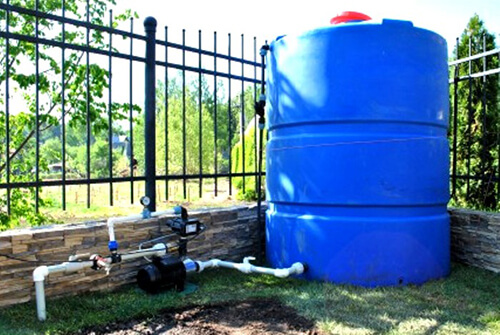
It is difficult for urban residents to understand what problems may result in the illiterate arrangement of autonomous water supply in a private house. They live in the apartment to which water was originally summed up, they have a hot shower, the opportunity to take a bath at any time, wash the dishes, run the washing machine, not to mention the water heating - designers, builders and utilities took care of everything. The source of water supply at the city inhabitant is the most reliable, and all problems with interruptions in the receipt of water are not solved by them.
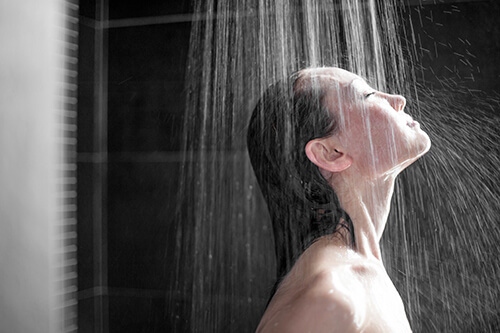
However, those who live in cottage and country villages know how difficult it is to organize a reliable and affordable source of water to which you can connect the pumping station and get the necessary water pressure. Most often, the conditions of the country house are not so perfect, for example:
- The house has a connection to a centralized water supply, however, the water here is not served around the clock, but several times a week (this is typical for many country villages);
- There is a well on the site, but its performance is not too high - it will quickly empty and it needs time to fill;
- Water comes from the artesian well, which is almost impossible to dry, but only an automatic pump can be used to supply water, which is turned off in the case of network interruptions.
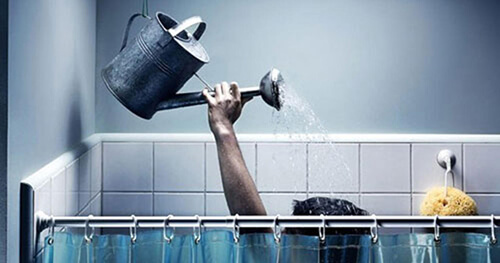
The cumulative tank acts as a battery, stock water in the period when there is no need for its submission to the house
Private water supply system with cumulative tank
There are two types of water supply systems of a private house with the participation of the accumulative tank - with the upper and lower tank. As it is clear from the name, the fundamental difference here lies in the location of the tank relative to the water supply.
Water supply with top tank
The cumulative tank in such a system is located on the top floor of the house. It works on the principle of water tower. The advantage of this option will be primarily the possibility autonomous work equipment. Water will come to the water intake points naturally, without the use of the pump. However, it is not possible to expect a strong pressure - as we remember, the height difference between the water source and a crane, equal to 10 m, creates a pressure of 1 atm. If you apply it to real conditions and assume that the tank will be installed in the attic two-storey house With the height of the ceilings of 3 meters, the pressure in the cranes on the first floor will be only 0.6 atm, and on the second floor - half less. At the same time, we do not take into account the hydraulic resistance of the pipeline.
Due to the slight pressure of water coming from the top tank, this system is recommended to be used in country houseswhere the need for comfortable water is minimal. For permanent residence in the house will require a more modern approach.
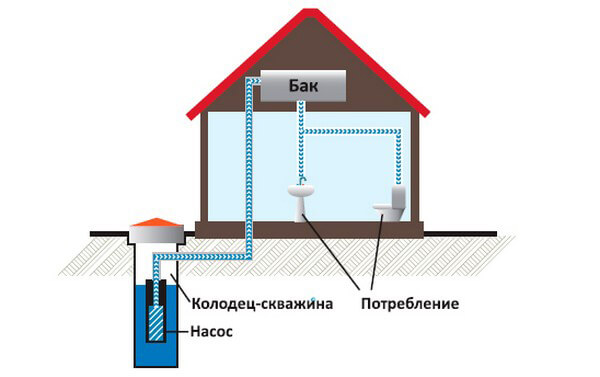
In addition, the indoors installed enough volumetric tank will take useful space. As a summer option, you can install a tank on the street on a special overpass, but for the winter this option will not fit. However, there is an output - electrical heating of the tank and insulation of the pipeline. Calculate how much you will cost you ... No, definitely, it is worth looking for a more rational solution! And it, fortunately, has long been there.
Water supply with lower tank
The lower tank is a solution for those who seek comfort and knows how to properly use the space of the site and at home. The tank is buried in the ground. And even this section of the Earth you can use - I swallowing the tank half the meter below the ground level, you get a plot suitable for growing colors or plants that are not related to root. The sizes of the tank in this case are not limited to anything, and what it is more, the more for a longer period will be able to overlap the difference between the needs of residents of the house in water and affordable resources.
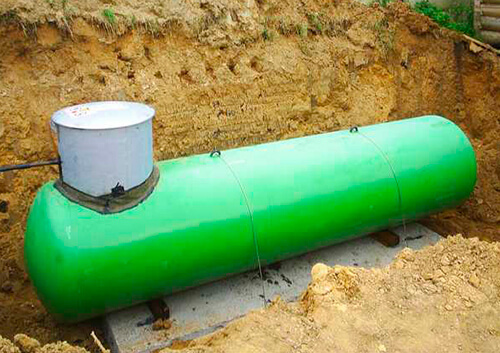
Cons, of course, are, however, they have a completely familiar form:
- You will need a pumping station to extract water from the reservoir and serve it into the house;
- Locating the capacity underground, you make cleaning and repair to hard-to-reach - to facilitate the task, make holes for revision and cleaning, and the tank itself will place a slightly tilt, so that the sediments accumulate in one place (preferably precisely under the cleaning hole);
- In winter, no insulation, the tank can dare, and in the spring with the wrong arrangement it will lead it.
The plastic tank, burned in the ground, should have either a round shape or ribbing, if both options are not available - create a concrete shell around it
How to calculate the amount of cumulative tank?
In the calculation of the required volume of the accumulative tank, two quantities are involved:
- Water consumption. The average data will be very averaged magnitude to repel from her. Consumption depends on the set of water use in the house and the number of residents. You can only have a couple of sinks and toilet, and can also be installed dishwasher, shower cabin, washing machine, etc. Of course, the difference between two options will be great. In general, the flow per person per day is about 200 liters of water in the presence of all the benefits of civilization. In the conditions of the country house, where water is used for cooking and washing the dishes, this consumption is reduced to about 60 l per day. However, it will be best to calculate your expenses on your own;
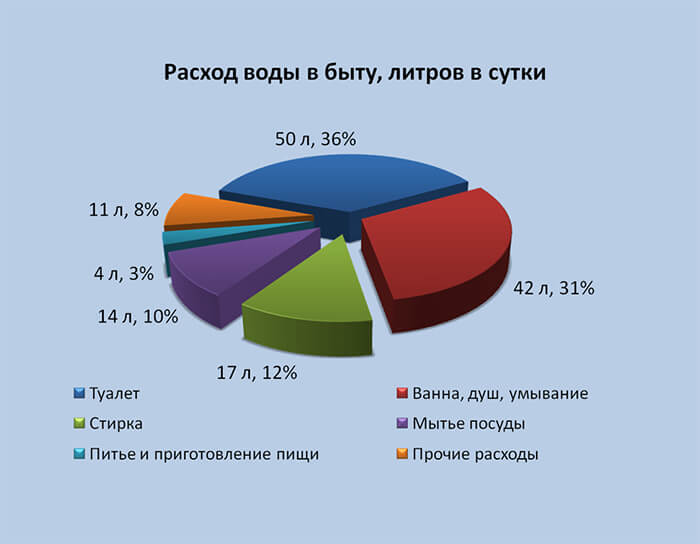
- Frequency of use. Measure your needs and the possibilities of your water supply. You can choose a huge tank, which will fit water for all your needs, but if the power of the system is not enough to pump it into it enough water in the allotted period, the need for a large tank simply disappears. In addition, it is worth considering the reasons why you decide to purchase a cumulative tank - if it serves to insurance from rare and short-term outages of electricity (with a diet of a well) or water (with a centralized water supply), it will be enough for a small tank.
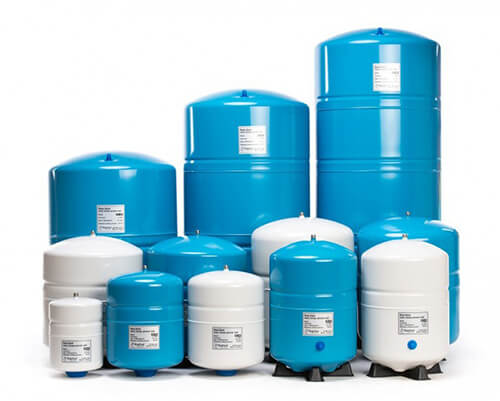
Do not confuse a cumulative tank with a hydroaccumulator serving to get rid of frequent short-term inclusions automatic pump - It spares 25-100 liters of water and is used to save the pump resources and extending his service life.
What makes a storage tank made of?
Accumulative tanks Made from food stainless steel or food plastics. In production strictly followed the quality of the material, because it will be enough to contact the water that will be subsequently used in nutritional purposes.
The features of the design are:
- Float Crane, installed on the inlet pipe. If the house uses autonomous water supply, the crane is replaced with a pump float switch. For warning emergency situations In the case of breakdown, the float cuts the overflow pipe below the inlet, it joins the sewage;
- The input also establishes a filter, which is chosen depending on the degree of water pollution - for relative clean water, the mud is chosen, and for water with plenty of sediment - cyclones or centrifugal pumps;
- Also, the mesh filter is installed on the output tube or directly before wiring into the house;
- If the tank has opaque walls, it is worth cutting into it;
- Underground tanks are equipped with cleaning hatches, and the upper tanks - a drainage pipe embedded at the bottom;
- It is better to use the scatterer to fill the tank with water - it is prevented by mixing and shaking the sediment;
- At the top of the container should be placed ventilation pipeCurved at an angle to the ground. When draining the water and the absence of air access, the tank is deformed.
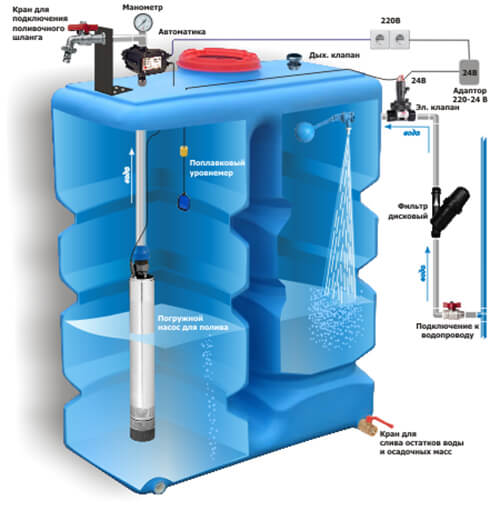
So, you have already made sure that the cumulative tank is indispensable for a private house. Whatever it is, one clear - it should definitely be. Our consultants will help to choose the cumulative tank correctly, and they will bring it specialists, not the first year of the water supply equipment for private houses.
Organization of autonomous water supply on country plot Provides the opportunity to use the benefits of civilization, regardless of the availability of centralized communications. Most often in personal baths arrange a cool water supply system from a well or well, and a cumulative container is used to support water. It is also required to collect the backup stock of water in case of electricity interruptions. Where it is better to place a cumulative tank for cold water so that the bath water supply system worked properly and did not create problems to the owners.
Storage tank in autonomous water supply
An individual water supply system with a cumulative tank is extremely simple. Water from a well or well shakes a pump whose type depends on the height of the water level in the source. Mostly in the country farms are used in pretty submersible pumps or stations with an ejector and its own hydraulic pack.
The pumping station is good if the country construction has its own basement. Or on the site is enough space for the construction of cabins under its placement, because This is enough "sonorous" equipment. But buying a station can get rid of the installation of a cumulative tank if its built-in reservoir will differ sufficient for daily consumption of volume.
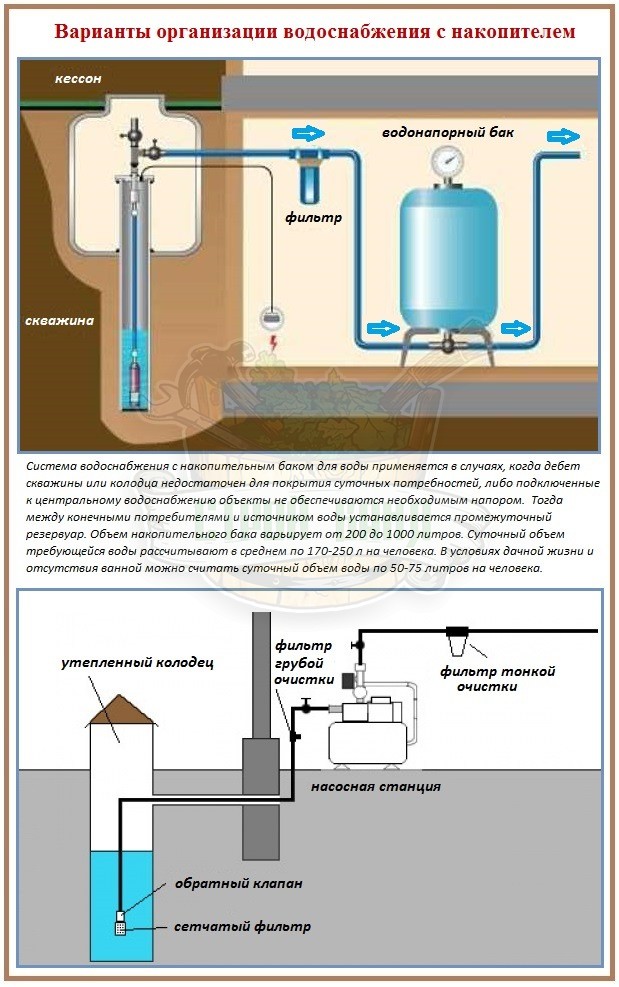
Unattractive on sound interference and surface pumps, but they are less cheaper. True, they swing water only from wells and wells with a high water mirror or from the lakes located nearby, ponds, rivers. For surface pumps, the main thing is that the difference between the height between the water intake point from the source and the point of delivery in the accumulative container did not exceed 6-7m, which is extremely rarely found in reality.
Thanks to the inclusion in the circuit of the accumulative capacity, the water is not immediately incorporated into the taps, the tank on the bath stove, boiler, shower, toilet tank and other watershed points. First, the water accumulates in the form of a stock, approximately equal to the volume of the drive. Water reserve in the accumulative tank makes it possible to use multiple plumbing devices at the same time. Without the stock of water, normal to use the pressure would be only in one open crane, and that is not a fact.
In the autonomous water-bearing capacity for cold water, the idea performs the function of the water tower. The stock of water is also possible to reasonably limit the number of inclusions / turn off the pump that any technique is exclusively beneficial. The cumulative tank is equipped with a mechanical, electronic or electric float valve so that pumping equipment does not work is wasted, because:
- when water pumped into the tank reaches a limit level, the float signals the pump shutdown;
- when the level decreases, a command is fed to turn on the pump to replenish the consumed stock.
So eliminates the extra work of technology and overflows through the edge. Folk crafts instead of the valve, it is too far to use the float mechanism of the toilet, which tritely overlaps the hole for water intake when the required volume is exceeded. Enable / disable pump can be done manually or automatically. There is still a "dry running" relay to stop the pump in case of complete emptying of the accumulative tank.
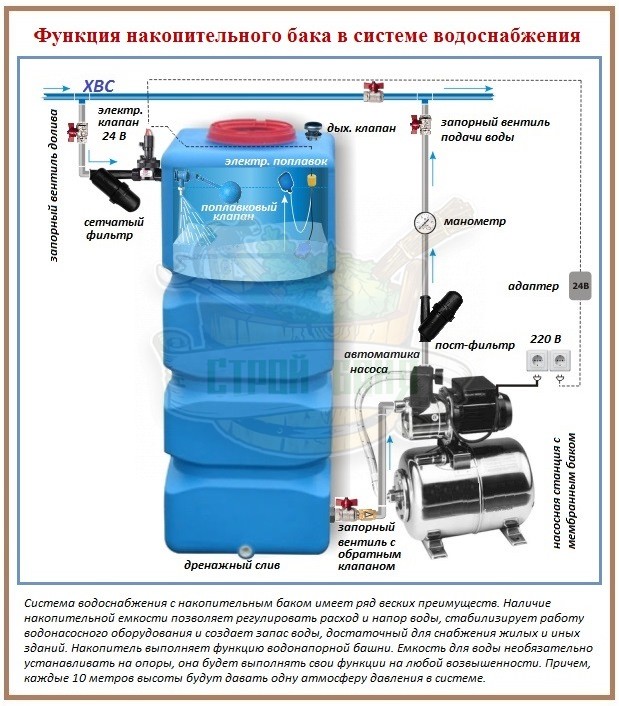
In the tank, the reserves for the reserve cold water holes required to connect the pipeline and to ensure the normal mode of operation of the system as a whole, this is:
- hole for connecting the feed pipe. Before entering the feed pipe, it is recommended to put a mesh filter of coarse cleaning to mechanically prevent shallow animals and large grains into the tank;
- an overflow pipe hole, according to which excess water from the tank in the sewer is derived. It is possible to overflow for a couple cm below the float valve in case, if the latter for some reason does not work;
- one or more holes for exhaust pipes that feed the water heater and the discharge point of the cold water. Often they are located in the lower third of the tank, but between the bottom of the drive and the output points should be at least 10 cm so that the precipitate inevitable for groundwater does not fall into the highway;
- the vent hole in the drive lid, if it closes the lid from penetration into the dust capacitance, insects and other contaminants.
An opening for entering the feed pipe is sometimes suitable in the top of the tank opposite the installation site of the float valve. However, for the complete drain of water from the drive in order to preserve the autonomous water supply, the opening of the inlet pipe is recommended to be placed in the bottom zone of the tank. It still needs to be equipped with a drain valve. If the lower position of the supply pipe is not possible to apply for any technical reasons, then for the preservation of the water supply system with a cumulative tank, an additional hole for drain will be required.

Methods for installing cumulative tanks
From the location of the backup tank depends the type of water supply layout and a set of equipment required for the trouble-free operation of the cold water supply system of the bath. In low-rise construction, two primary options for the construction of water pipelines with a drive are applied, this is:
- top scheme According to which the backup tank is installed on the maximum possible highest platform: flat roofEstabded on the brackets under the ceiling, concrete podium inside or outside the construction, attic, etc. The height of the installation of the drive in the upper scheme is a parameter adopted according to individual specifications. The drives of year-round water pipes are necessarily insulated if their installation was carried out in a unheated room;
- lower scheme Accordingla, the reservoir for cold water is burned into the ground in the basement of the structure or on the site, if water and other economic needs are supposed to be taken from the container. For the year-round water supply device, the drive is plugged below the freezing zone for summer water pipe The tank is sufficient to position so that between its upper plane and the earth surface was at a minimum of 0.5 m. It should also be provided for the lower entry of the incoming pipe and install a drainage device on it.
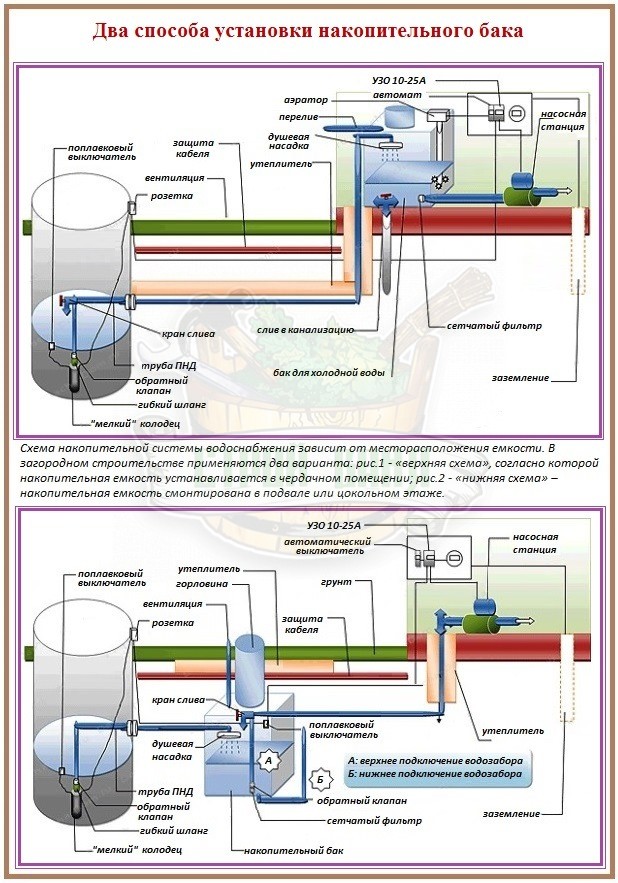
Often, independent homemade masters prefer the top scheme. The plumbing with the upper drive is easier to build with your own hands, and it will not require less expenses than underground. Water on watersum points is distributed by gravity without additional devices stimulating its movement. The only minus of the upper scheme is recognized as a rather weak pressure, depending on the height of the installation of the accumulative tank. To create a pressure of 0.1 atmosphere, the tank will need to be lifted to 1m, for 0.5 atm. 5 m. Do not forget that for work for the operation of the washing machine, for example, the waterproof pressure of 1 atm is needed.
The water supply with the lower drive is sometimes relating to systems with pneumatic abilities. The pump is injected into the underground capacity of water, from which the airbag available there is compressed. When water in the tank reaches a certain level, the compressed air will begin to push it upstairs to the water disposal points. True, the pneumatic abilities of water pipes with lower layout are rarely relying. They are too insignificant. Most often, for supplying water with a stable pressure from the lower cumulative tank, an additional, mounted directly in the tank of the drainage type submersible pump with a float signaling device is used.
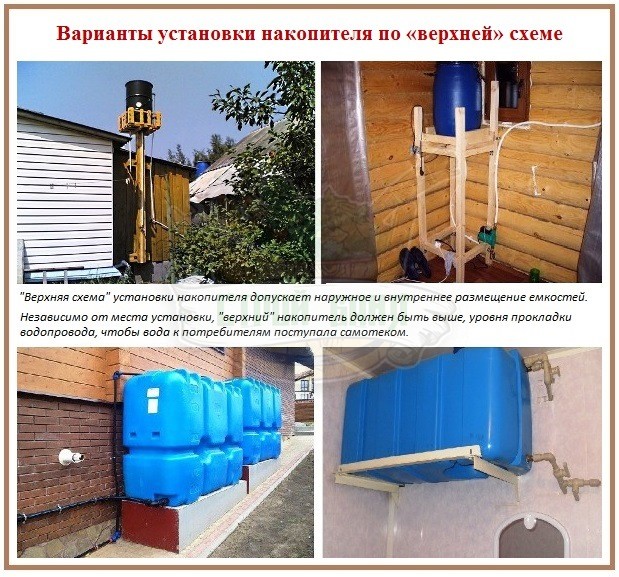
Optimal material for cumulative tank
The volume of cumulative capacity should be equal to one-time consumption of water. In this aspect of preferences, everyone varies. Therefore, the acceptable capacity of the tanks varies from 100 to 1000l. Requirements for accumulative tanks for cold water supply to the upcoming operating conditions. In any case, the capacity should be a hermetic, wear-resistant, stable, inert with respect to chemical and biological pollutants.
As a drive in the organization of autonomous water supply, you can use:
- homemade welded tank with a lid or without it if the water quality is not too worried about the owners of the summer cottage;
- factory opaque plastic container, instead of which the use of Eurocubes interconnected by pipes is quite valid;
- concrete cavity, sprinkled in an underground or overhead formwork.
With their own hands, the tank can be welded from sheet steel, aluminum, from cropping pipes of large diameter. The budget alternative will represent metal barrel Or an old bath with a well-preserved enamel if it is planned to organize a temporary system of summer water supply to the upper cumulative tank. For her, it will still need to make the cover with the ventilation hole.
The storage material is selected, based on the location of its installation:
- in the upper scheme, a ready-made plastic tank or a metal container of its own manufacture can be used. The design on which the drive will be watered should be pre-enhanced, because it will have to keep from 100 to 1000 kg of additional weight. If the tank is located outside, it must be carefully attached to the overpack, so that after draining the water, the empty reservoir does not turn over the wind;
- in Nizhnysem, bath water supply with cumulative tank the best choice There will be a ready-made container of food plastic or Eurocuba. The tank with concrete walls is perfect, which can also serve as a protective "shell" for a plastic tank. Concrete protection will protect the empty or half an empty plastic product from the soil pressure. Those. Two in one - the perfect choice.
If the owners of a stationary bath water supply with the bottom drive for several days will leave the favorite estate, water from the underground tank can not be drained. She does not bloom, because her environment resembles a thermos, and will not freeze, because The tank is below the freezing horizon. But the cleaning of the underground tank can create problems if the container does not equip a service hatch and do not bring the inlet pipe at the bottom of the container.
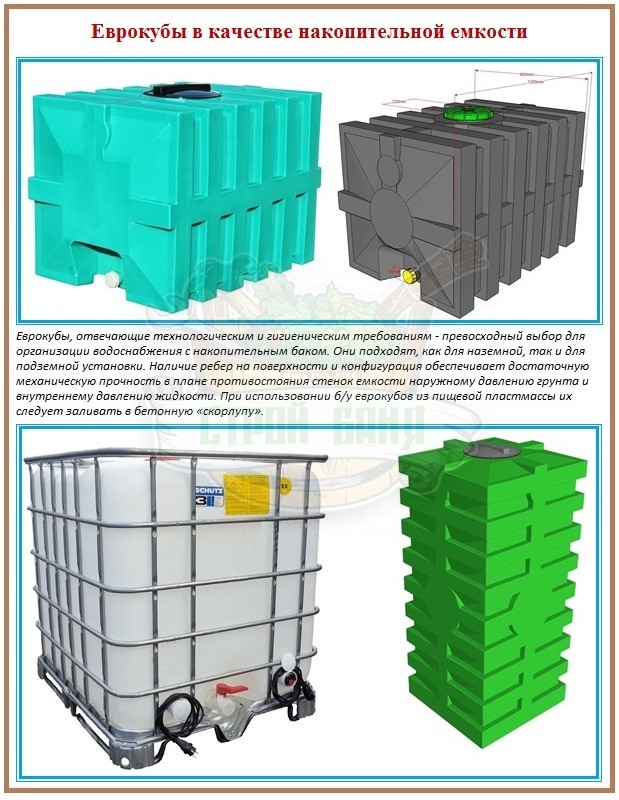
Membrane hydroaccumulator instead of the drive
Hydroaccumulator with membrane - high-tech descendant of conventional drives. His cost is not too humane, but all questions with the supply, water reserve and the provision of pressure he solves independently. The membrane tank is a metal container separated inside into two parts with an elastic bag-shaped membrane. In one of the parts of the tank, air or nitrogen is injected. Traditionally, the gaseous medium has 2 atmospheric pressure, but it can be adjusted.
When the pump is working, water fills the second part of the tank, stretches the membrane and compresses the gaseous medium, which, when opening the crane, pushes water to consumption points. The hydroaccumulator filled according to the specified parameters automatically disables the pump. With emptying of the tank and the concomitant pressure drop in the tank, the automation again includes pumping equipment.
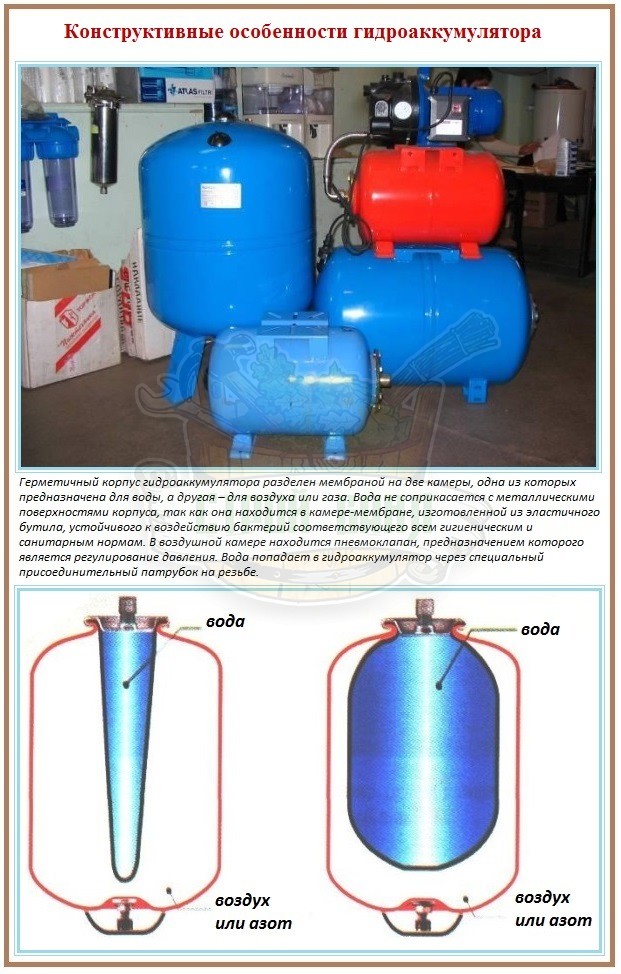
The membrane tank is mounted before pipeline branching. It can be installed in the besson well, in the pit of the well or directly in the bath. At the inlet to the container, there should be a check valve that eliminates the dragging water to the source to the source at the output pressure gauge to test the pressure. To derive air from the system, the hydroaccumulator is equipped with an automatic valve. The membrane container works in a dynamic mode, because it is not taken for too large internal volumes.
Membrane type hydrobacom is a very useful thing in the farm, but notable. For its installation and configuration should not be taken, without having experience in this matter. Incorrect pressure setting may result in a membrane break. The mounting of the vibrating device should be very reliable. Without knowledge of technological subtleties, the tank will disturb with a rather unpleasant sound. But the proper installation of a conventional cumulative tank for feeding into the bathing room is even recommended and economically acquitted.

The procedure for installing a simple top drive
We analyze the common option with the location of the drive in the attic. So you make or choose a container that can crawl into an attic hatch or window. Limitations in volume and dimensions are not terrible to those who have thought over the construction scheme of the water supply system. Then the capacity can be installed in advance on the upper overlap, if it does not interfere with the construction of the rafter system.

Now in detail we will analyze how to install and connect a tank for cold water into a year-round battle:
- pre-strengthen the base, putting thick boards on the beams of the upper overlap;
- we establish the container on the place laid;
- mount the float valve. To do this, we note the point by retreating from the upper edge of the tank 7-7.5 cm, and cut the hole of the size you need. Insert the valve shank to the formed hole, pre-put on it plastic washer. On the other side of the wall of the tank, we first wear a stiffery plate, then the second washer and retard the nut. Tighten fasteners and attach a connector to the shank so that the feed pipe can be connected;
- drills holes for exhaust pipes according to their size. From the inside of the tank insert the connector with a plastic washer in each hole. Threads are strengthened by turning out the two or three layers of fum-tape, after which they put on the washer and screw the nut;
- in each exhaust pipe cut a locking valve;
- we are overflowing, for which we note the point by 2-2.5 cm below the point of marking of the float crane and drill the hole. Pubril tube is discharged into the sewer, fasten it to Baku connectors by analogy with the previous one;
- we bring to the tube tank and fix them with a compression method. The newly created areas of the pipeline are attached to walls or beams;
- fill the drive with water in order to check the tightness of the compounds, at the same time regulating the position of the float in accordance with the position of overflow;
- warm the container, attaching around the walls of polystyrene long trimming or wrapped with mineral wool.
![]()
Video instructions for installing an underground drive
This is such a democratic way you can organize cold water supply with a bathing drive. In essence, it general recommendations - peculiar information to think that should be adjusted according to the technical characteristics of the structure.

